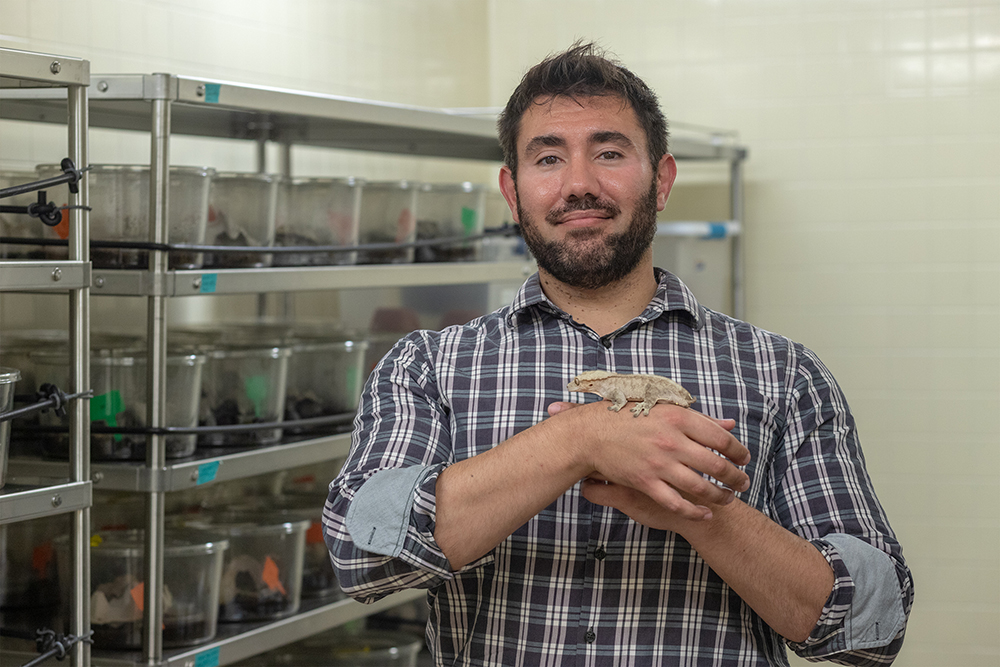
Some students sell blood plasma to make extra cash during graduate school. Thomas Lozito, a new assistant professor of orthopaedic surgery and stem cell biology and regenerative medicine at USC, sold poison dart frogs to ward off the impecunity of the PhD years.
“When I was in high school and all the way up to graduate school, my goal was to keep every different species of dart frog,” he said. “They’re beautiful. I would set up a colony, take care of them, and actually breed them. I was able to supplement my income in graduate school with breeding these rare frogs.”
To this day, amphibians and reptiles remain central to Lozito’s career. His USC laboratory compares limb and tail regeneration in lizards and salamanders with the goal of applying this knowledge to improve healing in humans.
“When I got my first grant for studying lizard tail regeneration, my mom was surprised that all the time ‘wasted’ obsessing over these reptiles and amphibians—I was actually able to incorporate it into a career,” said Lozito, whose pets have included chameleons, lizards, turtles, fish, octopi, squid and a python.
Growing up, Lozito initially dreamed of becoming a paleontologist, then a veterinarian. By the time he was an undergraduate at Johns Hopkins University, he had shifted his focus to biomedical engineering, with minors in both chemical engineering and math. He began focusing on stem cell biology during his PhD, which he pursued through a joint program between the National Institutes of Health (NIH) and Cambridge University.
When his graduate school mentor Rocky Tuan moved from NIH to the University of Pittsburgh, Lozito joined him as a postdoctoral trainee. Tuan gave Lozito the freedom to pursue his interest in lizard tail regeneration, which resulted in several research publications and an NIH R01 grant. Based on these successes, Lozito earned a position as an assistant professor, first at the University of Pittsburgh, and then at USC.
“At the end of the day, there are so many amazing animal abilities,” said Lozito. “I found myself drawn to finding out exactly how animals do the things that they do. Just in terms of the medical field, there are animals that are resistant to cancer, that can regenerate limbs. I’m almost thinking of them as superpowers.”
Lozito studies a salamander species, the axolotl, that possesses the “superpower” of regrowing a perfect tail or limb following amputation. His lab compares the axolotl with three lizard species—the mourning gecko, sarasinorum gecko and green anole—that regrow imperfect tails made of cartilage in lieu of bony vertebrae. His lab also studies the crested gecko, which doesn’t regrow its tail at all.
“The axolotl salamander spends its life in a larval stage, so that ‘Peter Pan syndrome’ of never growing up is not directly applicable to mammals,” he said. “Lizards are the closest relatives to mammals that are able to regenerate an appendage in their tail. Their immune systems are similar to those of mammals. Their genomic structure is similar to mammals. Their developmental processes are similar to mammals. So what we find with lizards is more directly applicable to improving mammalian wound healing.”
In addition, Lozito’s research could inform efforts to stimulate cartilage regeneration as a treatment for arthritis, or even advance spinal cord regeneration.
“There are some amazing lizard species out there,” he said. “And how to translate animals’ superpowers to humans is something I’m really interested in.”
